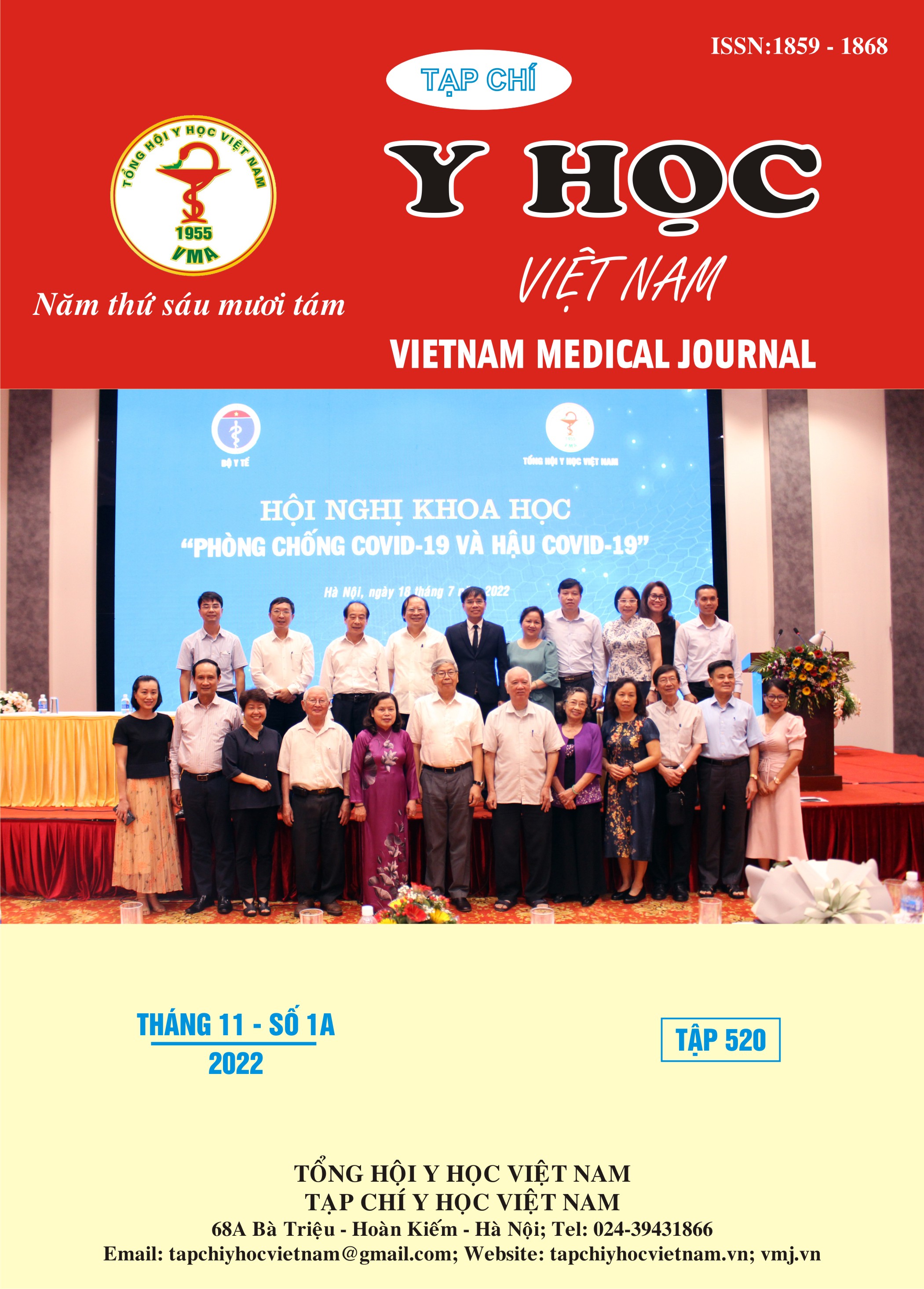EFFICACY OF HIGH-FLOW NASAL CANNULA OXYGEN THERAPY (HHFNC) ON PATIENTS WITH THE ACUTE EXACERBATION OF CHRONIC OBSTRUCTIVE PULMONARY DISEASE
Main Article Content
Abstract
Objectives: This study was conducted to evaluate the effectiveness of the heated and humidified high-flow nasal cannula (HHFNC) system on patients with the exacerbations of chronic obstructive pulmonary disease (COPD). Methods: A prospective interventional study, data was collected on all patients diagnosed with COPD exacerbation according to GOLD 2020 criteria admitted to the Center for Emegency Medicine who was on HHFNC during the period from August2021 to July 2022. Clinical indicators and blood gases were evaluated before and after HHFNC. Results: The success rate with HHFNC in patients with COPD exacerbations was 65.6% (21/32 patients). HHFNC was effective in improving clinical parameters and blood gases after 48 hours of intervention, specifically: heart rate (88.90 versus 102.72), respiratory rate (20.67 versus 27.06), SpO2 (92.24 vs. 83.66), pH (7.44 vs. 7.30), PaCO2 (46.71 vs. 61.45), PaO2 (95.34 vs 85.03) ), PaO2/FiO2 (326.19 vs 246.13), FiO2 (29.0 vs 35.31). These were statisticlly significant (p<0.05). Conclusion: HHFNC is effective in reducing the risk of intubation, improving clinical parameters and blood gases in patients with COPD exacerbations.
Article Details
Keywords
Noninvasive mechanical ventilation, HHFNC, ACOPD
References
2. Seemungal T.A., Donaldson G.C., Paul E.A., et al. (1998). Effect of exacerbation on quality of life in patients with chronic obstructive pulmonary disease. Am J Respir Crit Care Med, 157(5 Pt 1), 1418–1422.
3. Bräunlich J., Köhler M., Wirtz H. (2016). Nasal highflow improves ventilation in patients with COPD. Int J Chron Obstruct Pulmon Dis, 11, 1077–1085.
4. Hernández G., Vaquero C., Colinas L., et al. (2016). Effect of Postextubation High-Flow Nasal Cannula vs Noninvasive Ventilation on Reintubation and Postextubation Respiratory Failure in High-Risk Patients: A Randomized Clinical Trial. JAMA, 316(15), 1565–1574.
5. Jing G., Li J., Hao D., et al. (2019). Comparison of high flow nasal cannula with noninvasive ventilation in chronic obstructive pulmonary disease patients with hypercapnia in preventing postextubation respiratory failure: A pilot randomized controlled trial. Res Nurs Health, 42(3), 217–225.
6. Kim V., Aaron S.D. (2018). What is a COPD exacerbation? Current definitions, pitfalls, challenges and opportunities for improvement. Eur Respir J, 52(5).
7. Pisani L., Fasano L., Corcione N., et al. (2017). Change in pulmonary mechanics and the effect on breathing pattern of high flow oxygen therapy in stable hypercapnic COPD. Thorax, 72(4), 373–375.
8. Sun J., Li Y., Ling B., et al. (2019). High flow nasal cannula oxygen therapy versus non-invasive ventilation for chronic obstructive pulmonary disease with acute-moderate hypercapnic respiratory failure: an observational cohort study. Int J Chron Obstruct Pulmon Dis, 14, 1229–1237.
9. Tan D., Walline J.H., Ling B., et al. (2020). High-flow nasal cannula oxygen therapy versus non-invasive ventilation for chronic obstructive pulmonary disease patients after extubation: a multicenter, randomized controlled trial. Crit Care, 24(1), 489.
10. Global Initiative for Chronic Obstructive Lung Disease (2021), Pocket Guide to COPD Diagnosis, Management and Prevention - A Guide for Health Care Professionals: 2022 Report.


